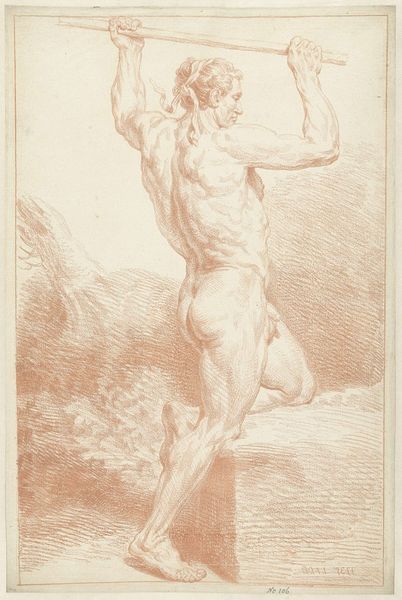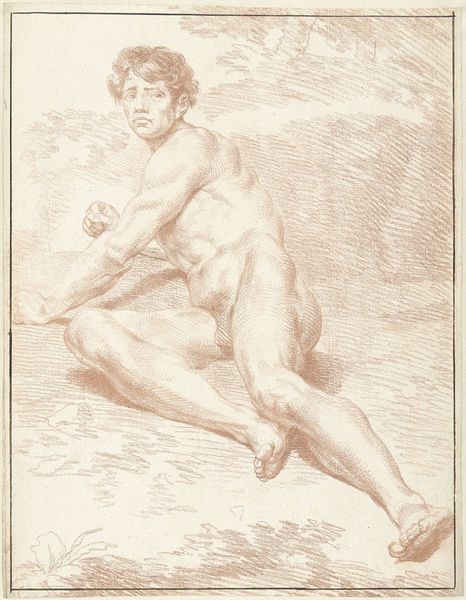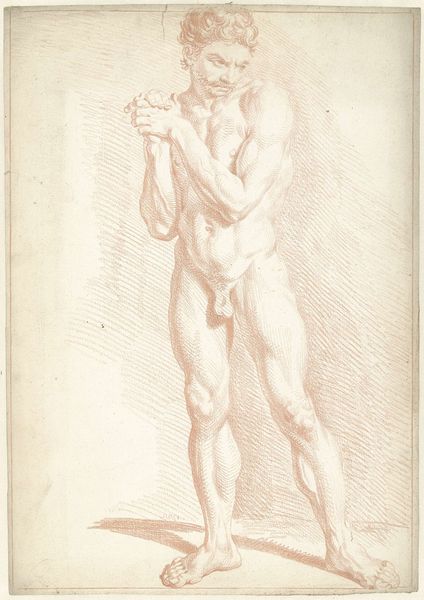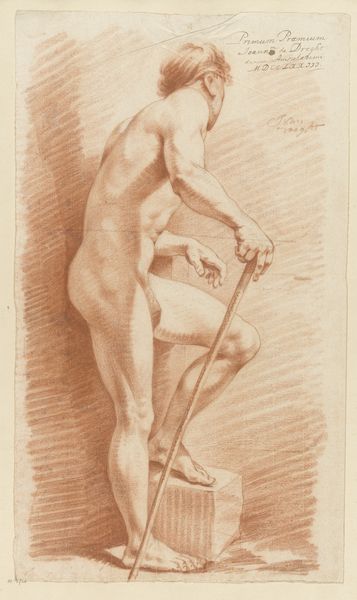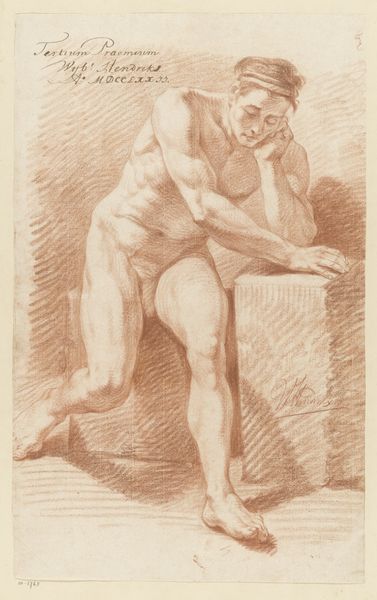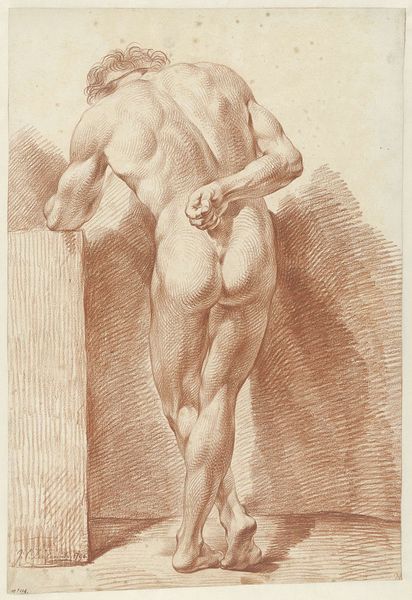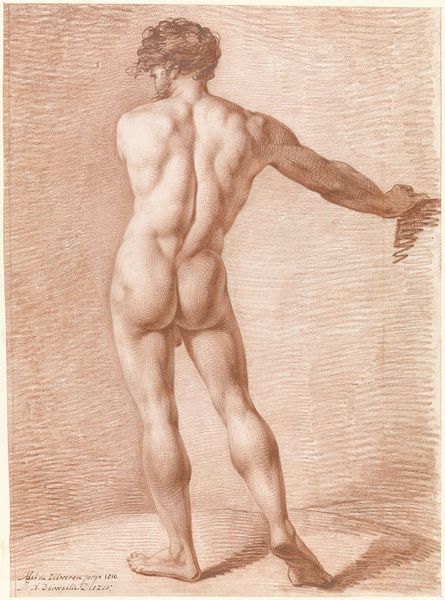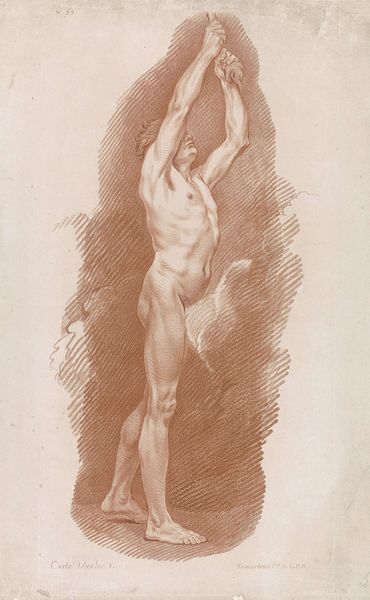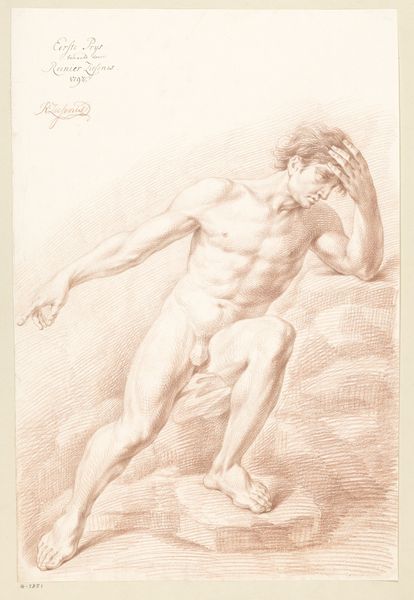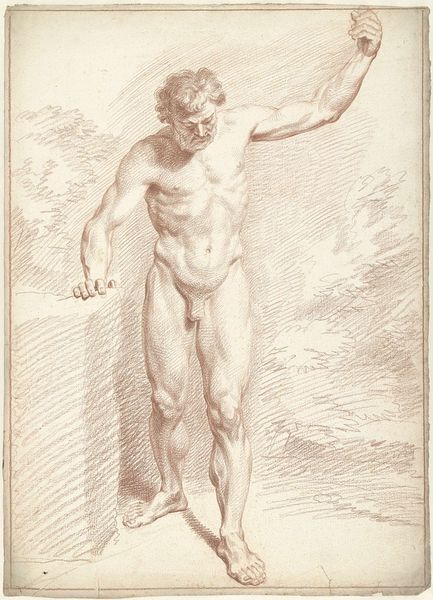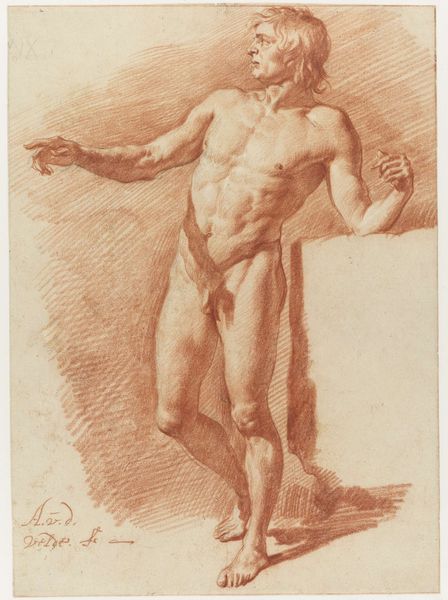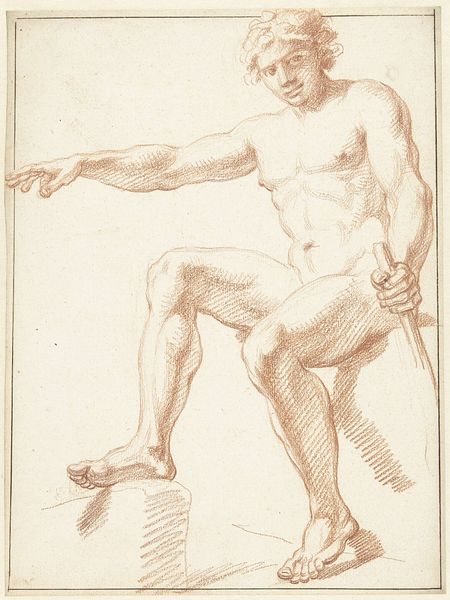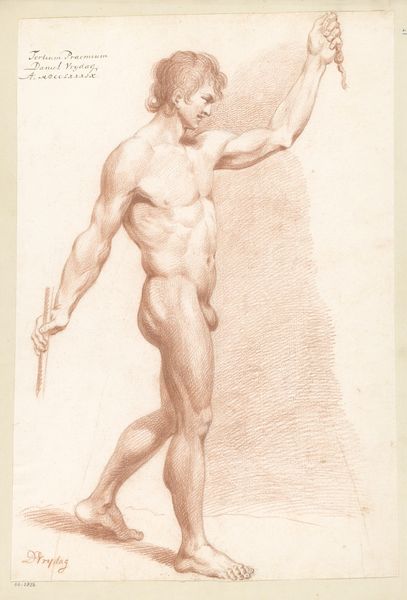
print, etching
#
baroque
# print
#
etching
#
figuration
#
history-painting
#
nude
Dimensions: height 465 mm, width 313 mm
Copyright: Rijks Museum: Open Domain
Louis Fabritius Dubourg created this red chalk drawing of a nude male figure pulling on a rope sometime in the 18th century. In this period, artistic and cultural values often reinforced social hierarchies. Naked male figures in art were typically idealized, embodying strength and virility, and were reserved for the male gaze. Dubourg's drawing engages with traditional representations of masculinity by focusing on a muscular figure engaged in physical exertion. This contrasts with the more passive or decorative roles often assigned to women in art. In what ways does the drawing challenge or reinforce societal expectations of masculinity? Does the act of pulling a rope symbolize anything beyond physical strength, perhaps hinting at labor, power, or even restraint? Consider how Dubourg's work reflects and shapes the complex interplay between the body, labor, and social identity.
Comments
No comments
Be the first to comment and join the conversation on the ultimate creative platform.
